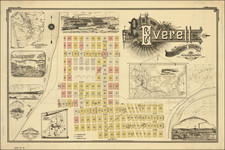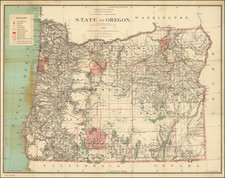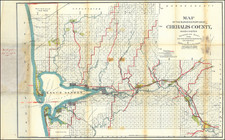This survey chart, produced by the United States Coast Survey (USCS), is a striking testament to the extensive and meticulous work done to chart the western coast of the United States, from the Umpquah River in Oregon up to the Straits of Juan de Fuca, marking the boundary with Canada. An integral part of the United States' westward expansion, the survey charts were critical tools for navigation, development, and defense.
Eight coastal profiles visually portray some of the most prominent geographical landmarks along the coast, from the rocky promontories of Cape Flattery to the sandy beaches of Cape Perpetua, each with their own unique history and significance.
Cape Disappointment, named by Captain John Meares in 1788 after failing to cross the Columbia River bar, is a place of stark beauty. Its treacherous waters have earned it the nickname of "Graveyard of the Pacific," but its importance as the northern boundary of the mouth of the Columbia River cannot be overstated.
Further north, Cape Flattery marks the northwesternmost point of the contiguous United States, first named by Captain James Cook in 1778. Today, it's part of the Makah Reservation, the indigenous people who have inhabited the region for thousands of years.
Flattery Rocks, Destruction Island, and Pt. Grenville are all coastal features charted along the Washington coast, bearing the imprints of both the natural forces that shaped them and the historical encounters, often marked by shipwrecks and explorations, that named them.
Tillamook Head, a high promontory in Oregon, is named after the Tillamook people, who inhabited the area for centuries. The famed American explorers Lewis and Clark described this dramatic vista in their journals during their westward expedition in the early 1800s.
Cape Lookout, another remarkable feature on the Oregon coast, provides a vantage point for spotting migrating whales. Its lighthouse, although not built until 1881, would have been a significant navigational point for ships during the latter half of the 19th century.
Finally, Cape Perpetua, located in the Siuslaw National Forest, is a headland that stands as the highest point on the Oregon Coast. The area is rich in Native American history and boasts a diverse range of flora and fauna.
The survey chart is also rich in sailing directions, soundings, and other maritime details that were essential for safe and efficient navigation. Land features and water depths are meticulously rendered, demonstrating the rigor and attention to detail of the survey team. The combination of these features along with the coastal profiles make the chart not only a practical tool for navigation but also a historical record of the region's geographical and human history.
The United States Office of the Coast Survey began in 1807, when Thomas Jefferson founded the Survey of the Coast. However, the fledgling office was plagued by the War of 1812 and disagreements over whether it should be civilian or military controlled. The entity was re-founded in 1832 with Ferdinand Rudolph Hassler as its superintendent. Although a civilian agency, many military officers served the office; army officers tended to perform the topographic surveys, while naval officers conducted the hydrographic work.
The Survey’s history was greatly affected by larger events in American history. During the Civil War, while the agency was led by Alexander Dallas Bache (Benjamin Franklin’s grandson), the Survey provided the Union army with charts. Survey personnel accompanied blockading squadrons in the field, making new charts in the process.
After the Civil War, as the country was settled, the Coast Survey sent parties to make new maps, employing scientists and naturalists like John Muir and Louis Agassiz in the process. By 1926, the Survey expanded their purview further to include aeronautical charts. During the Great Depression, the Coast Survey employed over 10,000 people and in the Second World War the office oversaw the production of 100 million maps for the Allies. Since 1970, the Coastal and Geodetic Survey has formed part of the National Oceanic and Atmospheric Administration (NOAA) and it is still producing navigational products and services today.









![[ Oregon / Northern California Coast ] A Chart Shewing Part of the Coast of N.W. America, with the Tracks of His Majesty's Sloop Discovery and Armed Tender Chatham . . .](https://storage.googleapis.com/raremaps/img/small/102069.jpg)


![[Central Idaho & Eastern Oregon Letter Sheet Map] This Is Not A Map Of The World . . . The Weiser Commercial Club, Weiser, Idaho.](https://storage.googleapis.com/raremaps/img/small/40601.jpg)

![[ North Fork Snoqualmie River -- Calligan Lake ] Township No. 25 North, Range No. 9 East.](https://storage.googleapis.com/raremaps/img/small/101663.jpg)